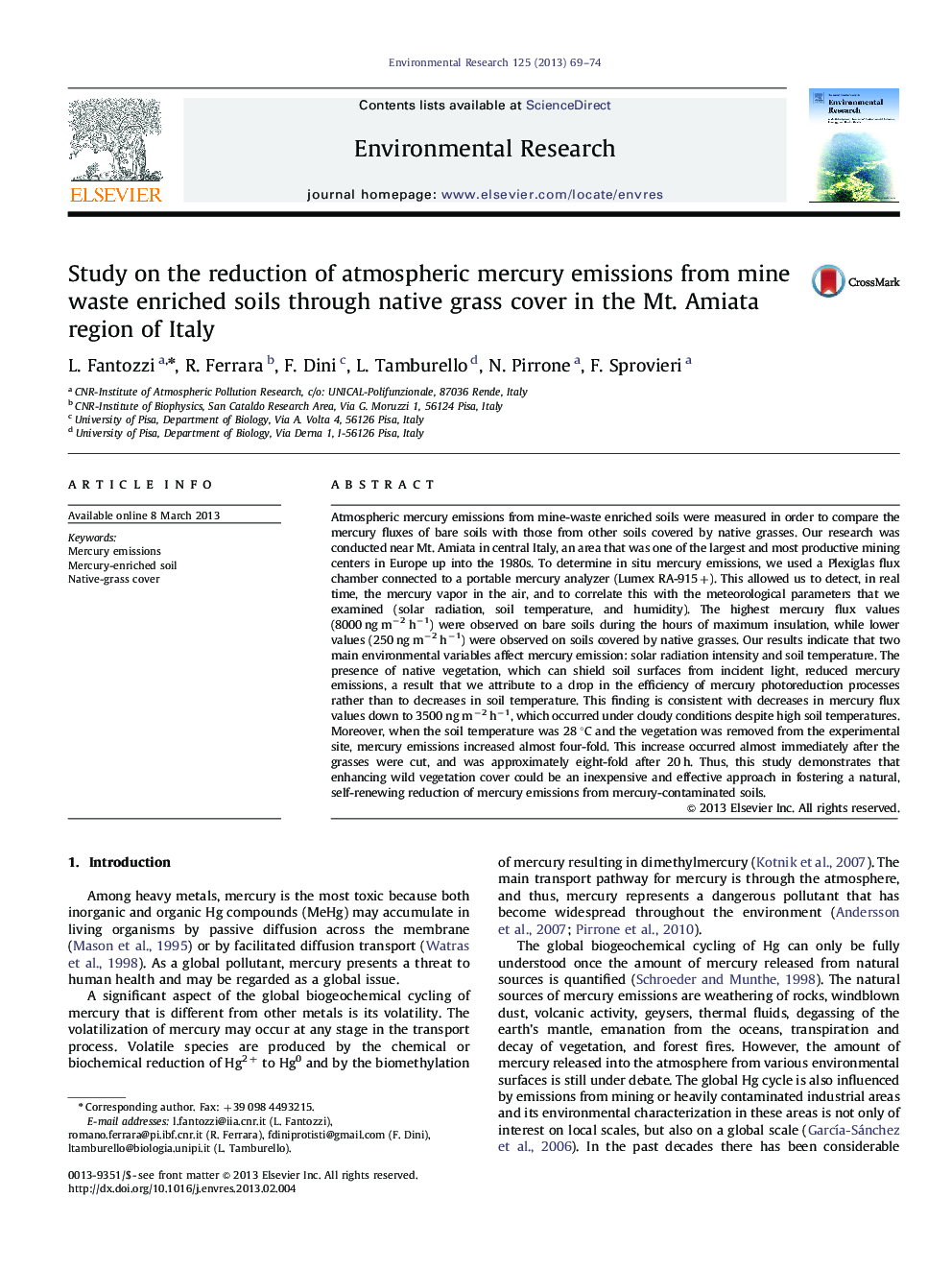| کد مقاله | کد نشریه | سال انتشار | مقاله انگلیسی | نسخه تمام متن |
|---|---|---|---|---|
| 4469846 | 1622576 | 2013 | 6 صفحه PDF | دانلود رایگان |

Atmospheric mercury emissions from mine-waste enriched soils were measured in order to compare the mercury fluxes of bare soils with those from other soils covered by native grasses. Our research was conducted near Mt. Amiata in central Italy, an area that was one of the largest and most productive mining centers in Europe up into the 1980s. To determine in situ mercury emissions, we used a Plexiglas flux chamber connected to a portable mercury analyzer (Lumex RA-915+). This allowed us to detect, in real time, the mercury vapor in the air, and to correlate this with the meteorological parameters that we examined (solar radiation, soil temperature, and humidity). The highest mercury flux values (8000 ng m−2 h−1) were observed on bare soils during the hours of maximum insulation, while lower values (250 ng m−2 h−1) were observed on soils covered by native grasses. Our results indicate that two main environmental variables affect mercury emission: solar radiation intensity and soil temperature. The presence of native vegetation, which can shield soil surfaces from incident light, reduced mercury emissions, a result that we attribute to a drop in the efficiency of mercury photoreduction processes rather than to decreases in soil temperature. This finding is consistent with decreases in mercury flux values down to 3500 ng m−2 h−1, which occurred under cloudy conditions despite high soil temperatures. Moreover, when the soil temperature was 28 °C and the vegetation was removed from the experimental site, mercury emissions increased almost four-fold. This increase occurred almost immediately after the grasses were cut, and was approximately eight-fold after 20 h. Thus, this study demonstrates that enhancing wild vegetation cover could be an inexpensive and effective approach in fostering a natural, self-renewing reduction of mercury emissions from mercury-contaminated soils.
► Mercury air/surface exchange from grass covered soil is different from bare soil.
► Light enhances mercury emissions and is the main parameter driving the process.
► The presence of wild vegetation covering the soil reduces mercury emission.
► Vegetative covers could be a solution to reduce atmospheric mercury pollution.
Journal: Environmental Research - Volume 125, August 2013, Pages 69–74